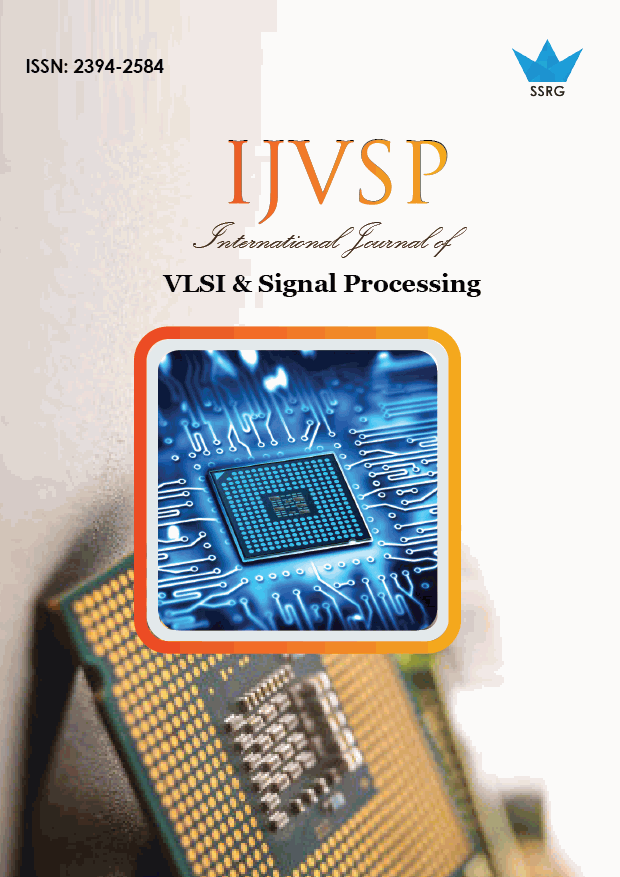Recent Trends in the Hybrid HVDC with Wind Energy a Solution to the Problem and Challenges

| International Journal of VLSI & Signal Processing |
| © 2015 by SSRG - IJVSP Journal |
| Volume 2 Issue 2 |
| Year of Publication : 2015 |
| Authors : Dr. Hadadi Sudheendra, Mr Tefera Mekonnen and Mr Melaku |
How to Cite?
Dr. Hadadi Sudheendra, Mr Tefera Mekonnen and Mr Melaku, "Recent Trends in the Hybrid HVDC with Wind Energy a Solution to the Problem and Challenges," SSRG International Journal of VLSI & Signal Processing, vol. 2, no. 2, pp. 20-33, 2015. Crossref, https://doi.org/10.14445/23942584/IJVSP-V2I2P105
Abstract:
As per the recent scenario the wind energy generation is the key source of energy to avoid the green house effect, since the green house effect as well the global warming is a serious threat to the environment . Hence popular to the investors, government, and general public since the 1970s. The awakening of higher investments in wind energy was caused by growing need for energy security. There are, however, numerous problems and challenges, both short and long term, with developing wind power generation.
Keywords:
HVDC , Wind Energy
References:
[1] Grigsby, L. L., et al. The Electric Power Engineering Handbook. USA: CRC Press. (2001). ISBN 0-8493-8578-4
[2] Thomas P. Hughes, Networks of Power: Electrification in Western Society 1880–1930.
[3] The Johns Hopkins University Press, Baltimore 2009 ISBN 0-8018-2873-2, an excellent overview of development during the first 50 years of commercial electric power
[4] Reilly, Helen (2008). Connecting the Country – New Zealand‟s National Grid 1886 – 2007.Wellington: Steele
[5] Roberts. pp. 376 pages.. ISBN 978-1-877448-40
[6] Pansini, Anthony J, E.E., P.E.undergrounding electric lines. USA Hayden book Co, 2009 ISBN 0-8104-0827-9.
[7] Prof . HSudheendra and Dr KNB Murthy, etal., New Orleans conference USA ,pp 610- 6142011.
[8] Wald, Matthew (August 27, 2008). Wind Energy Bumps Into Power Grid's,Limits. New York Times. p. A1.
[9] Donald G. Fink and H. Wayne Beaty, Standard Handbook for Electrical Engineers(15th Edition) McGraw-Hill, 2007 ISBN 978-0-07-144146-9 section 18.5
[10] Czech, P., reichert, K., Schweickardt, H.E. and Holm, H.," Static VAR systems in power transmissionPrinciples, Solutions, Applications, Experiences with a 450 MVA unit in a 735 kV system," CIGRE' 28th Session, Working Group No. 32-05, 1980.
[11]. Dr Hadadi Sudheendra, Dr N Krishnamurthy, Dr KNB Murthy, ResearchIndia publication, IEEE journal, 2011.Recent Trends in HVDC, ISSN 0974-2174 Volume 5, Number 1 (2012), pp. 31-37
[12] Gyugyi, L. and Otto, R.A.," Static shunt compensation for voltage flicker reduction and power factor correction," Proc. of the American Power Conf., Vol. 38, pp. 1271-1286, 1976.
[13] Johnson, E.R., Hasler, P.S., Moran, RJ. and Titus, C.H.," Static high-speed VAR control for arc furnace flicker reduction, " Proc. of the American Power Conf., Vol. 34, pp. 1097-1105, 1972.
[14] MATLAB/Simulink SimPower Systems. IEEE transactions, 2007-08,NJ, USA.
[15] Olwgard, A., Ahlgren, L. and Frank, H.," Thyristor-Controlled shunt capacitors for improving system stability," CIGRE' 26^Session, Working Group No. 32-20, 1976.
[16] Saadat, H., " Power System Analysis ", The Mc Graw- Hill Companies. 1999
[17] Sharaf, A.M. and Sivakumar, S.," Stabilizing interconnected power systems using static phase shifters ", Electric Power Systems Research, 8(1984/85) 249-259.
[18] Xing, K. and Kusic, G.," Application of thyristor-controlled Trans. Energy Conversion, Vol. 3, No. 4, Dec. 1988.
[19] Dr Hadadi Sudheendra, Mr Tefera Mekonnen, Mr Melaku, IJRMPS journal, June 14, IEEE , USA, PP 36-45 Jimma University, Ethiopia

 10.14445/23942584/IJVSP-V2I2P105
10.14445/23942584/IJVSP-V2I2P105